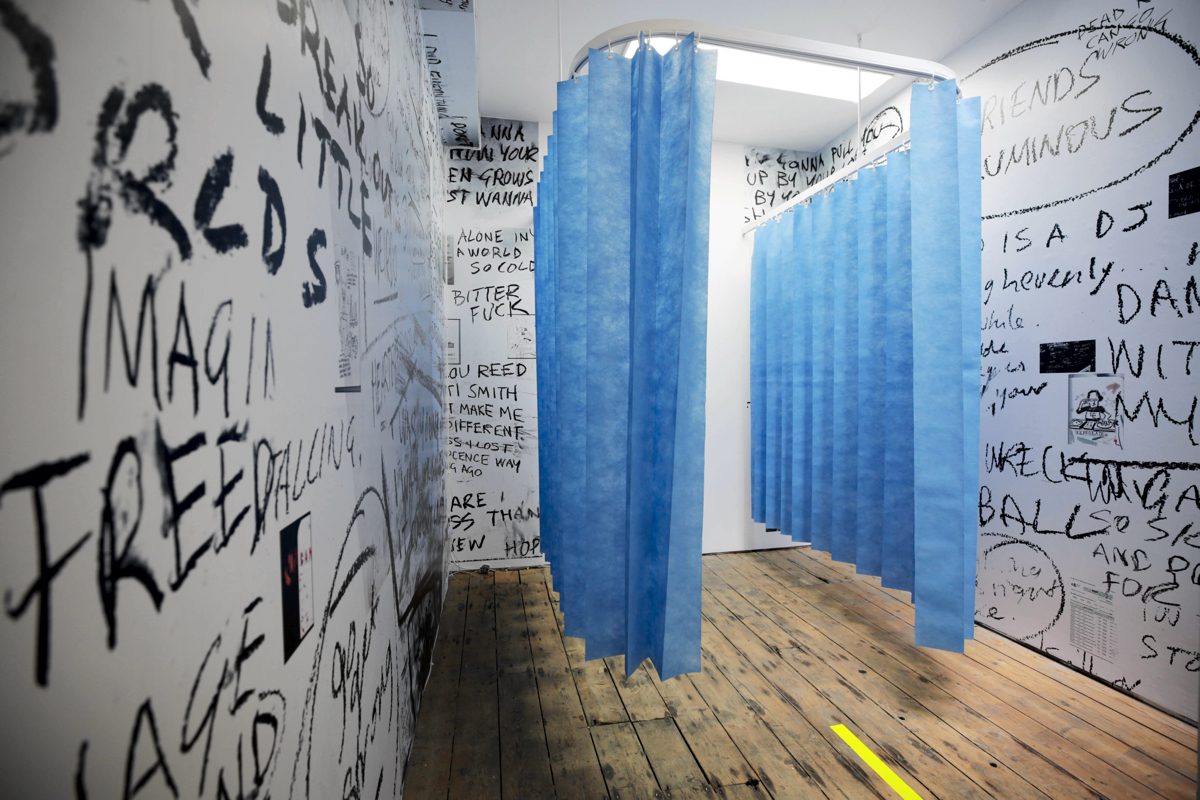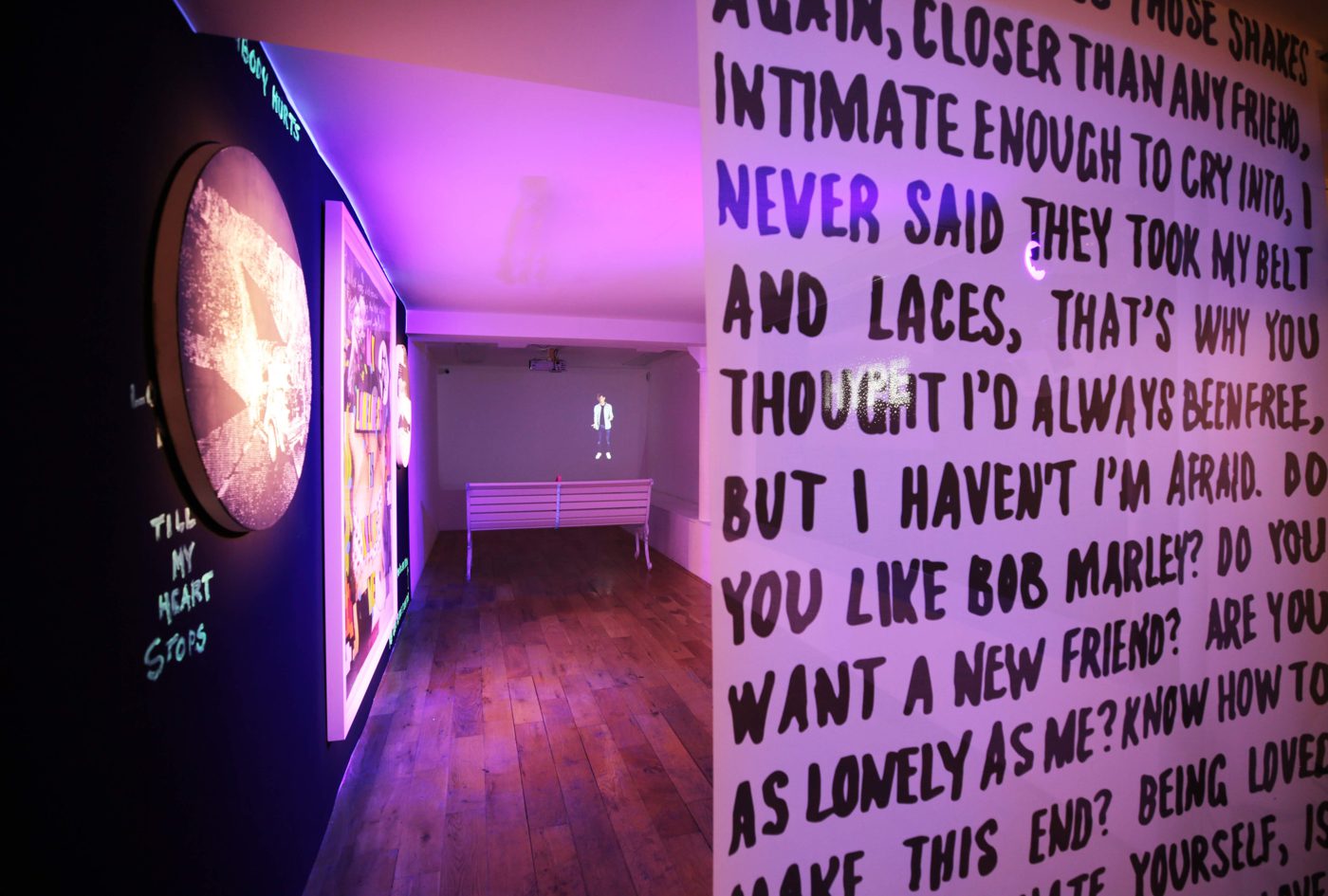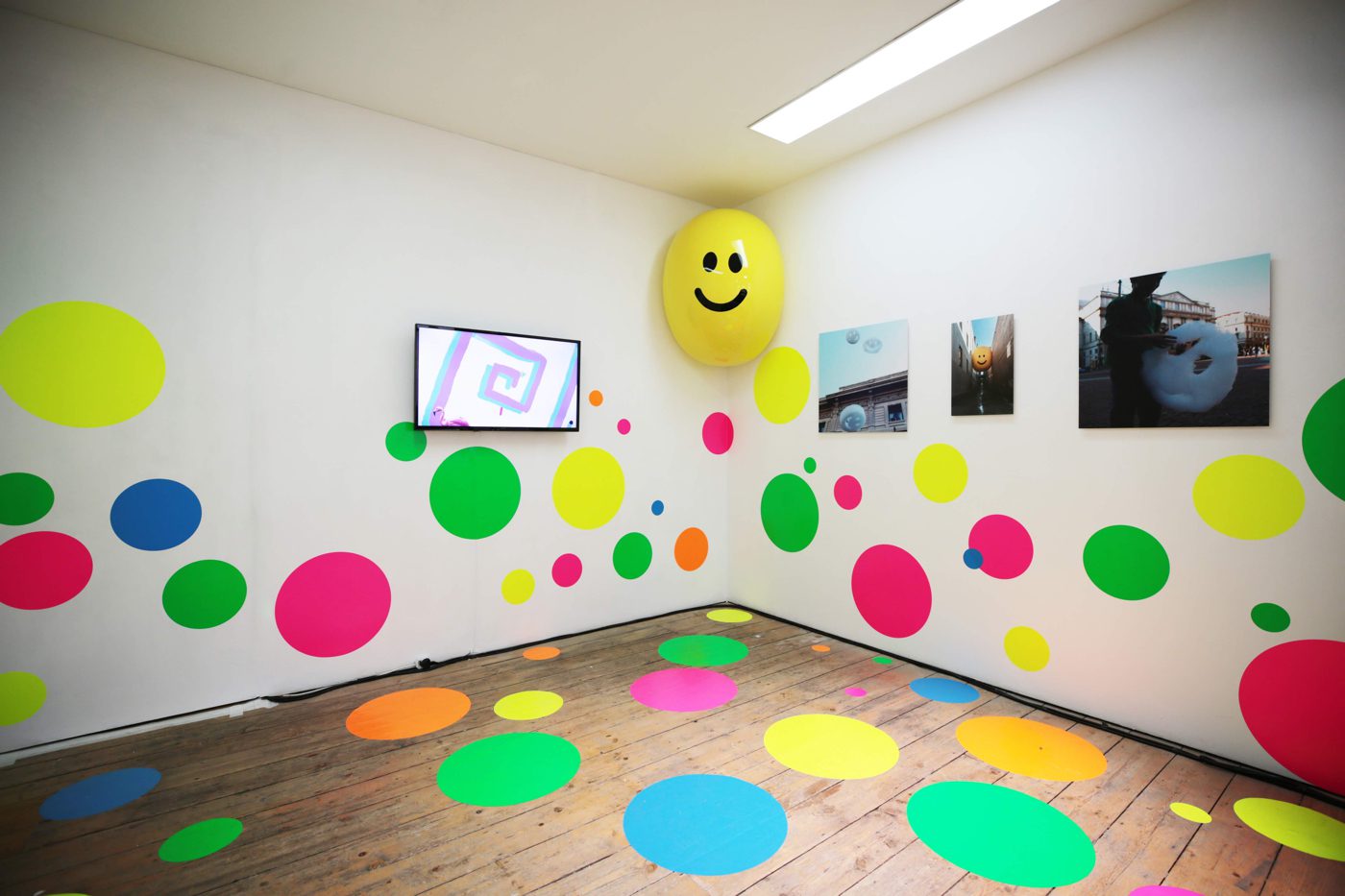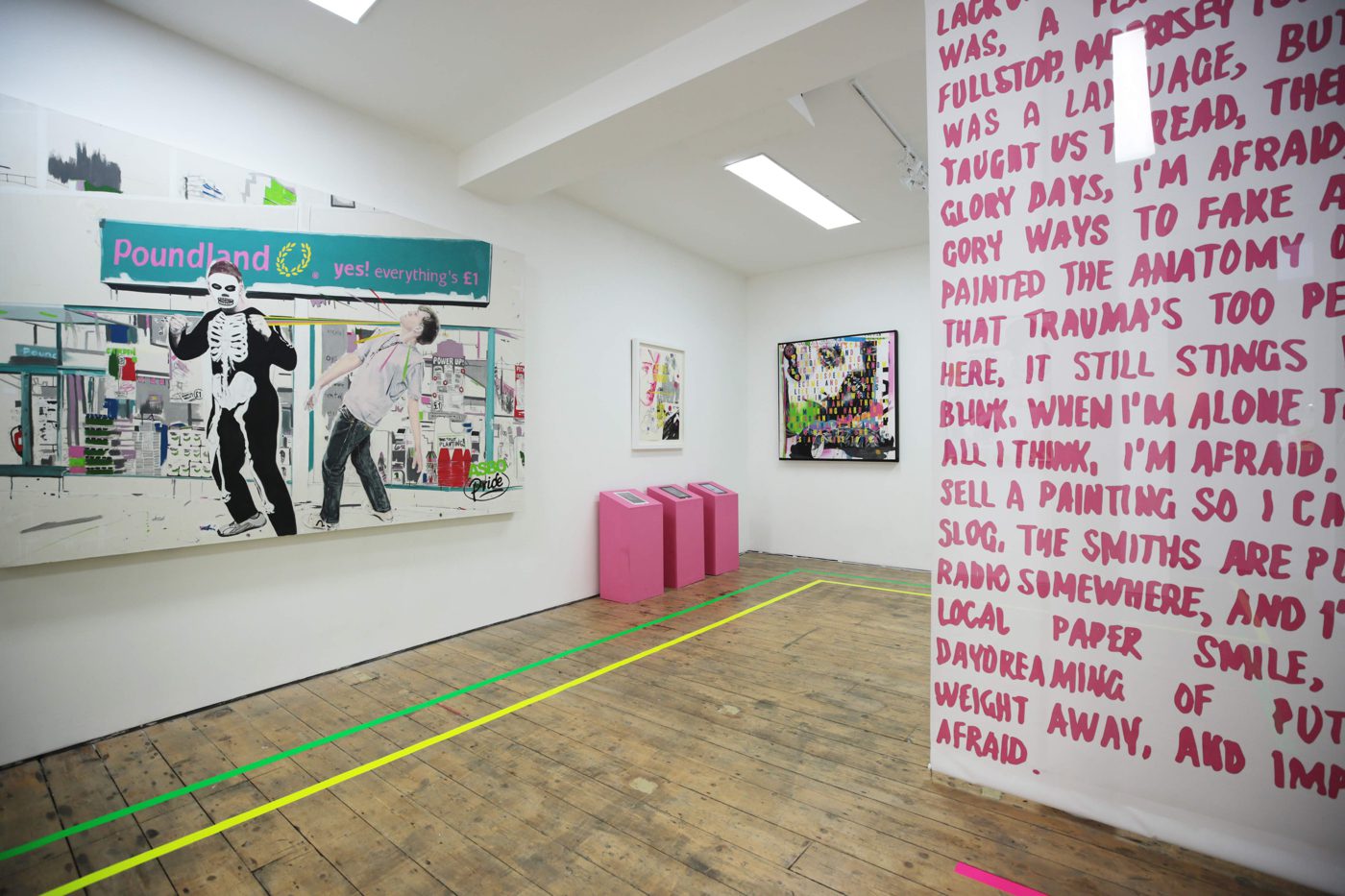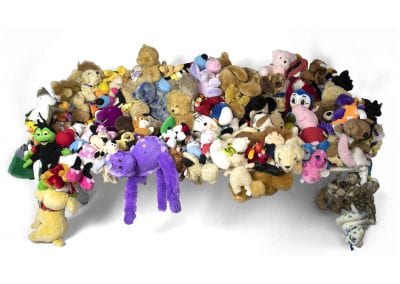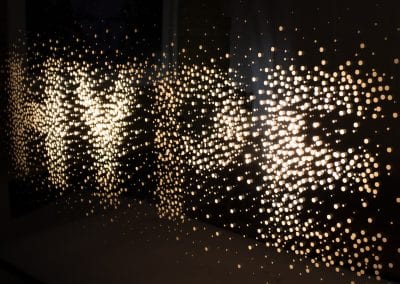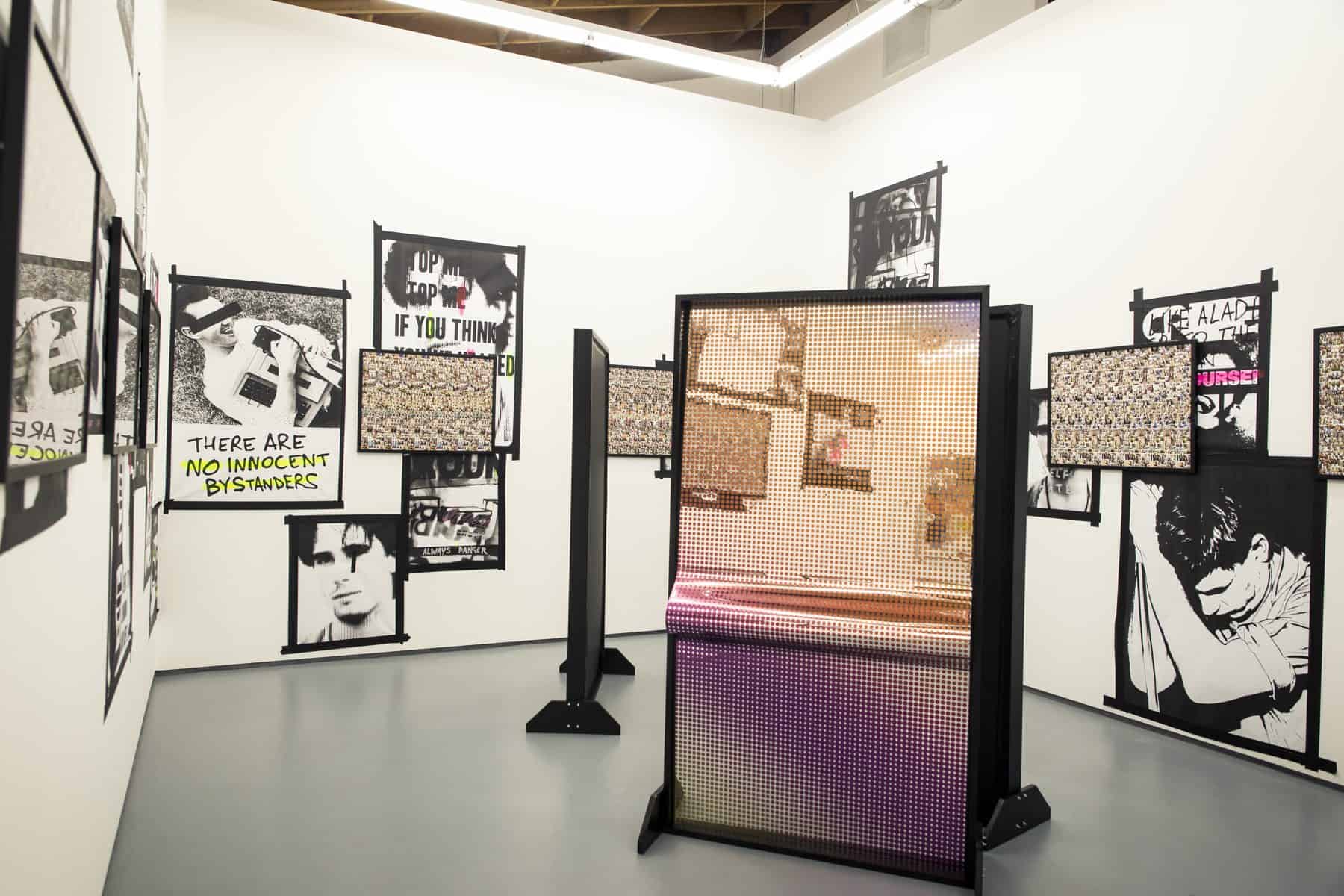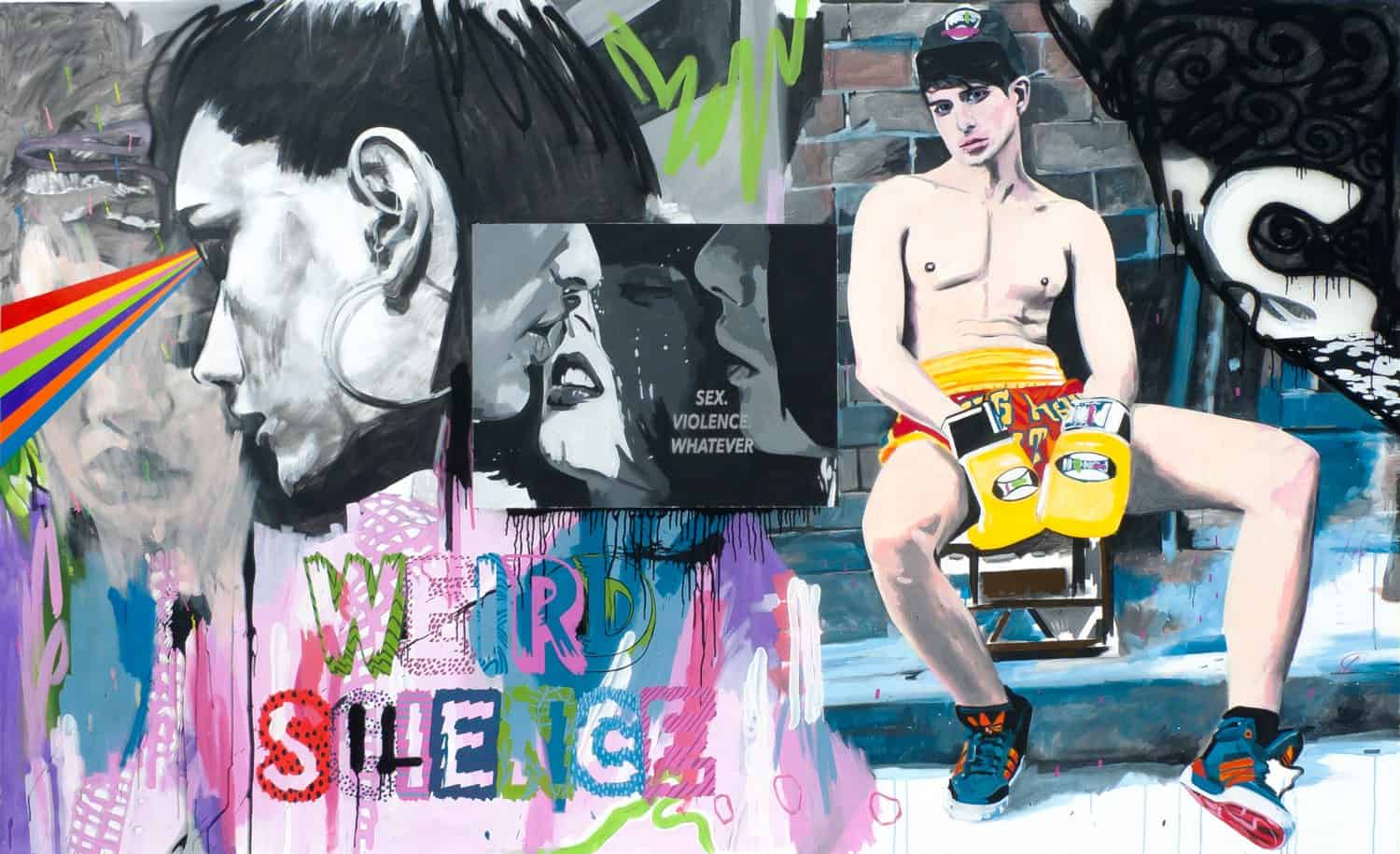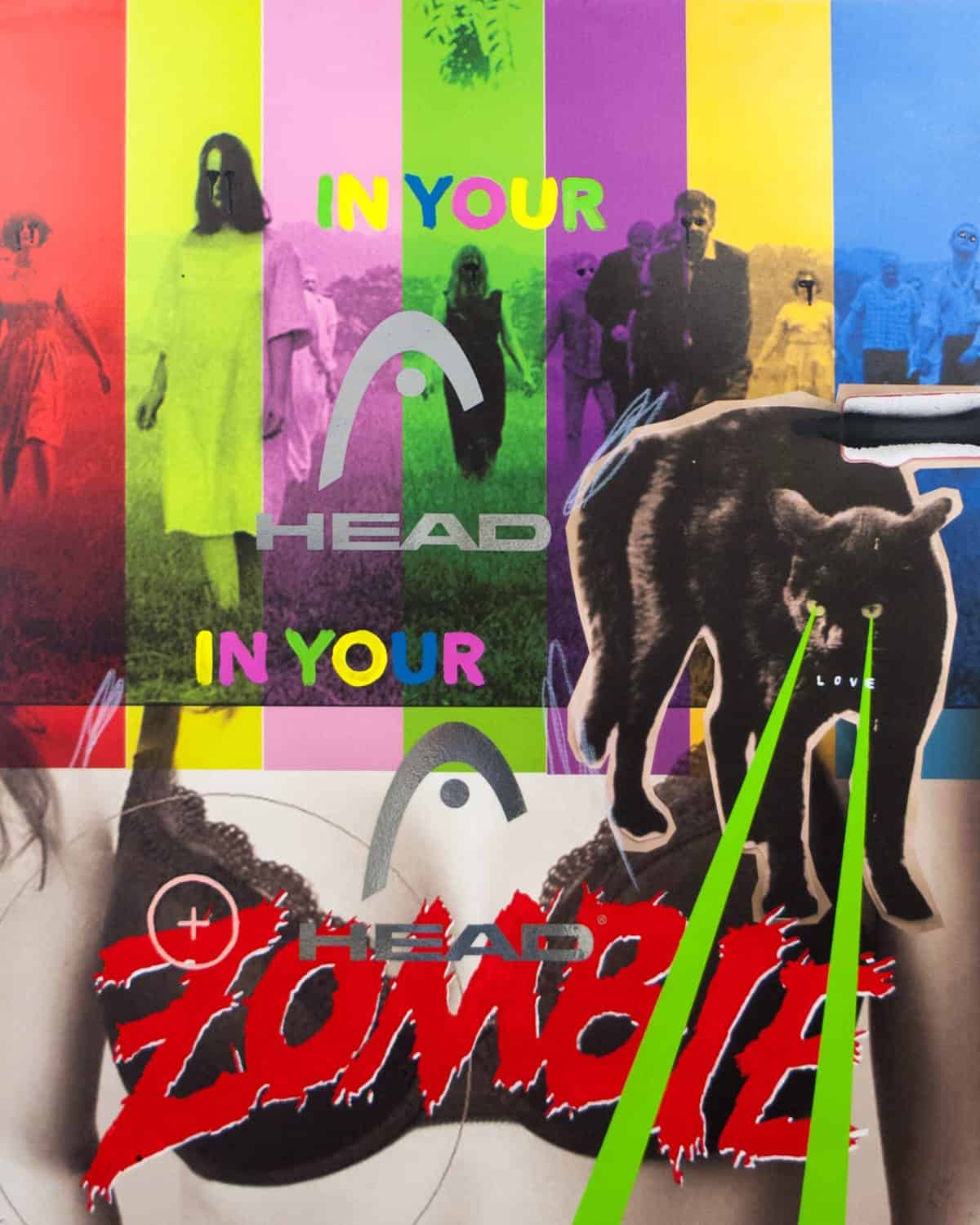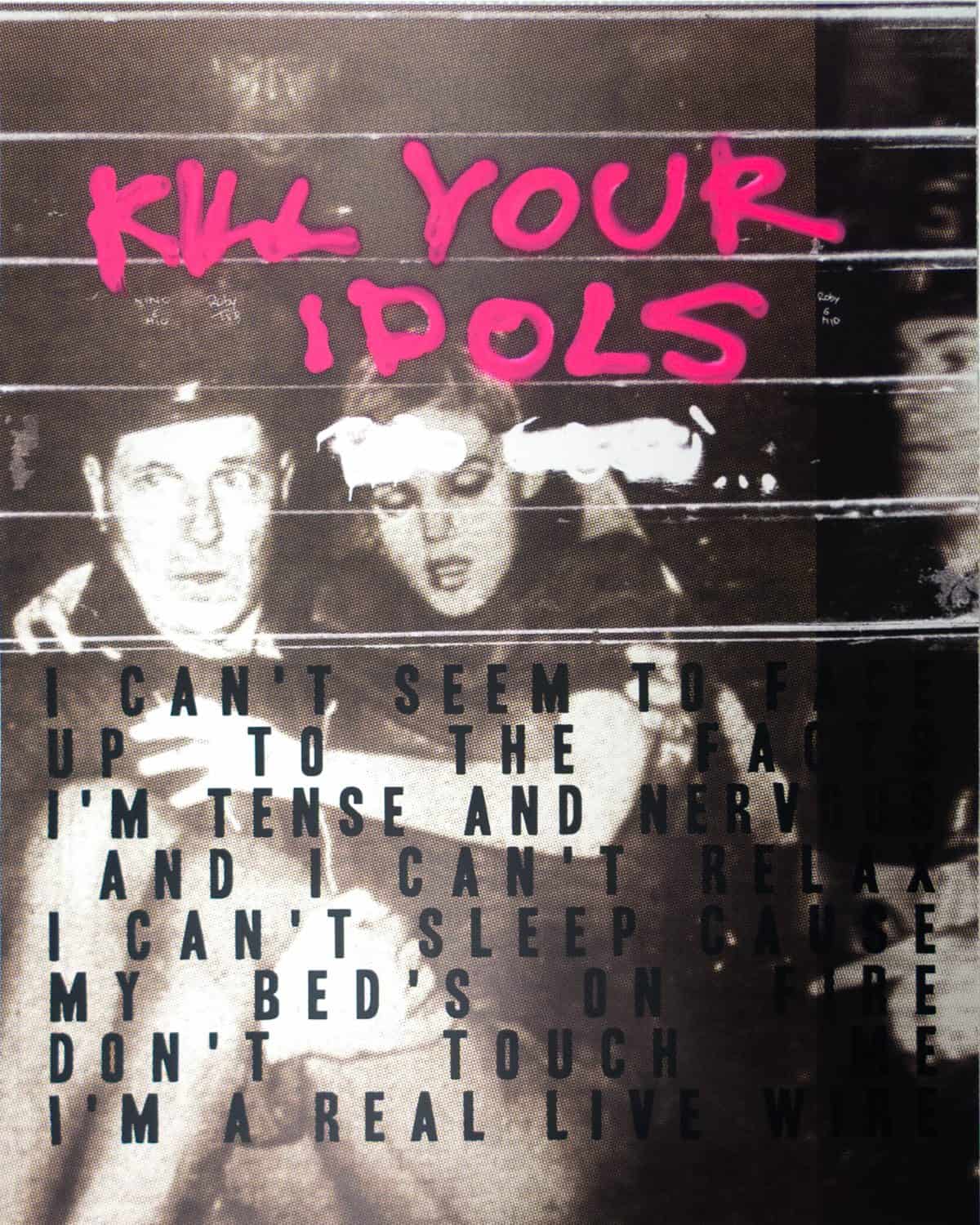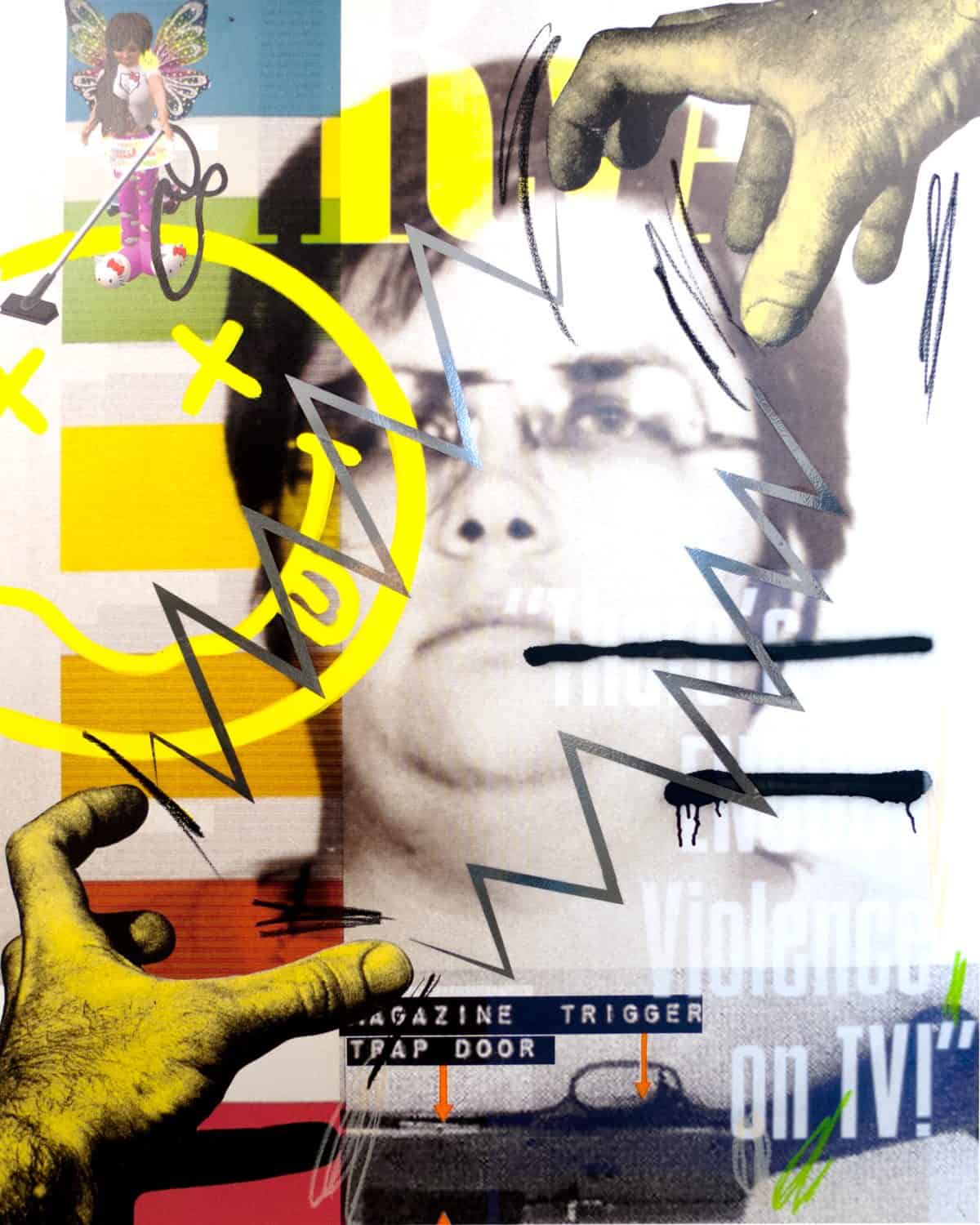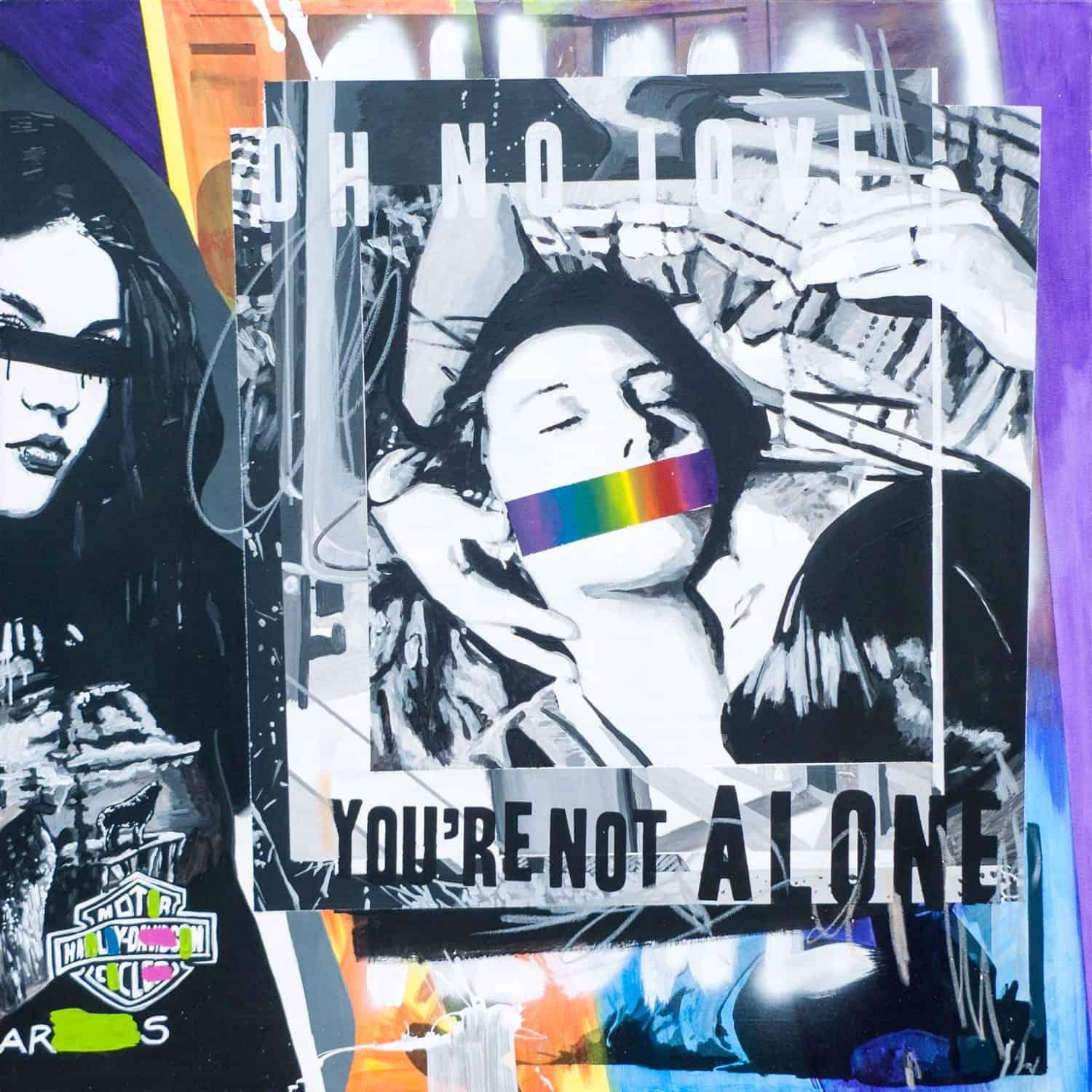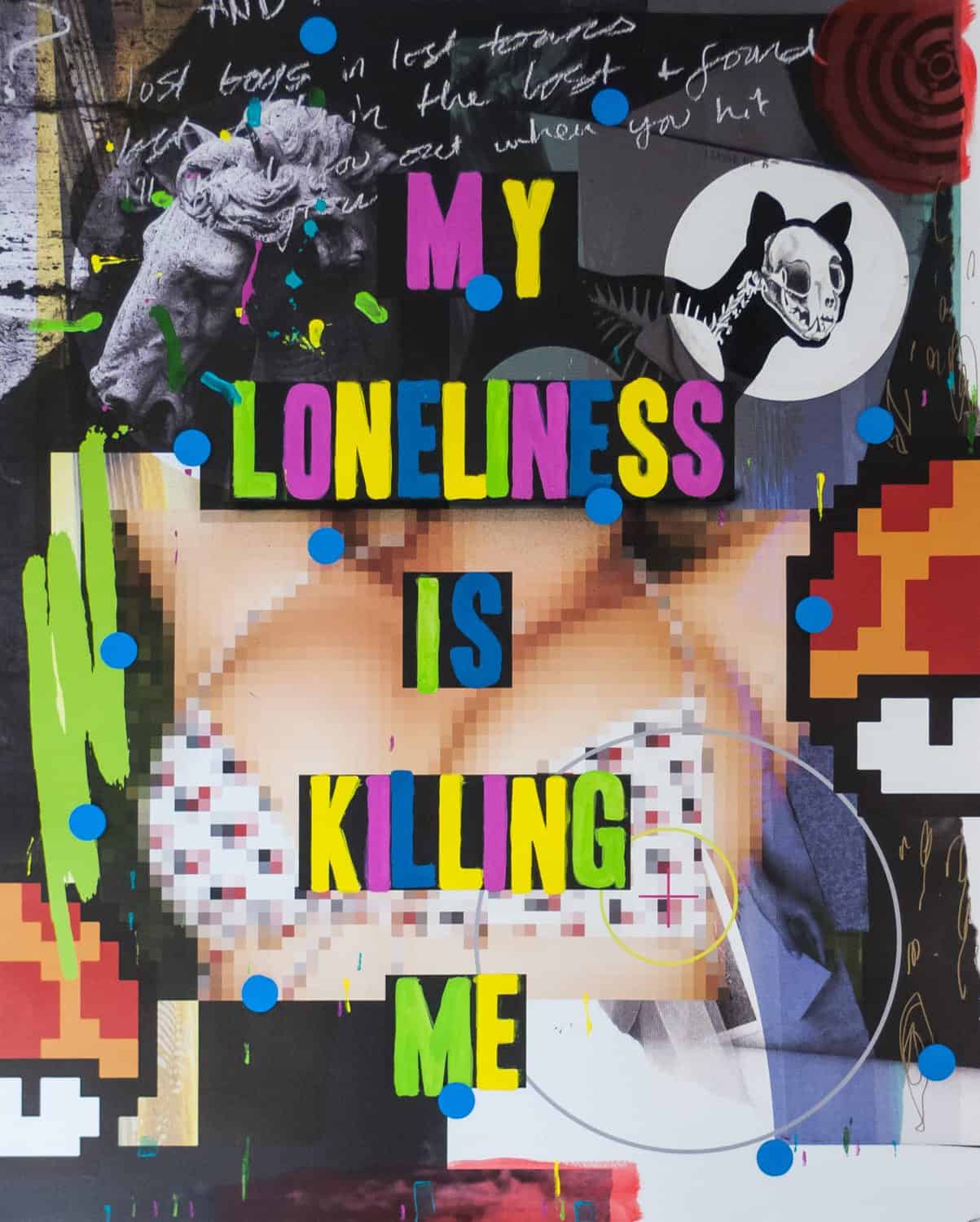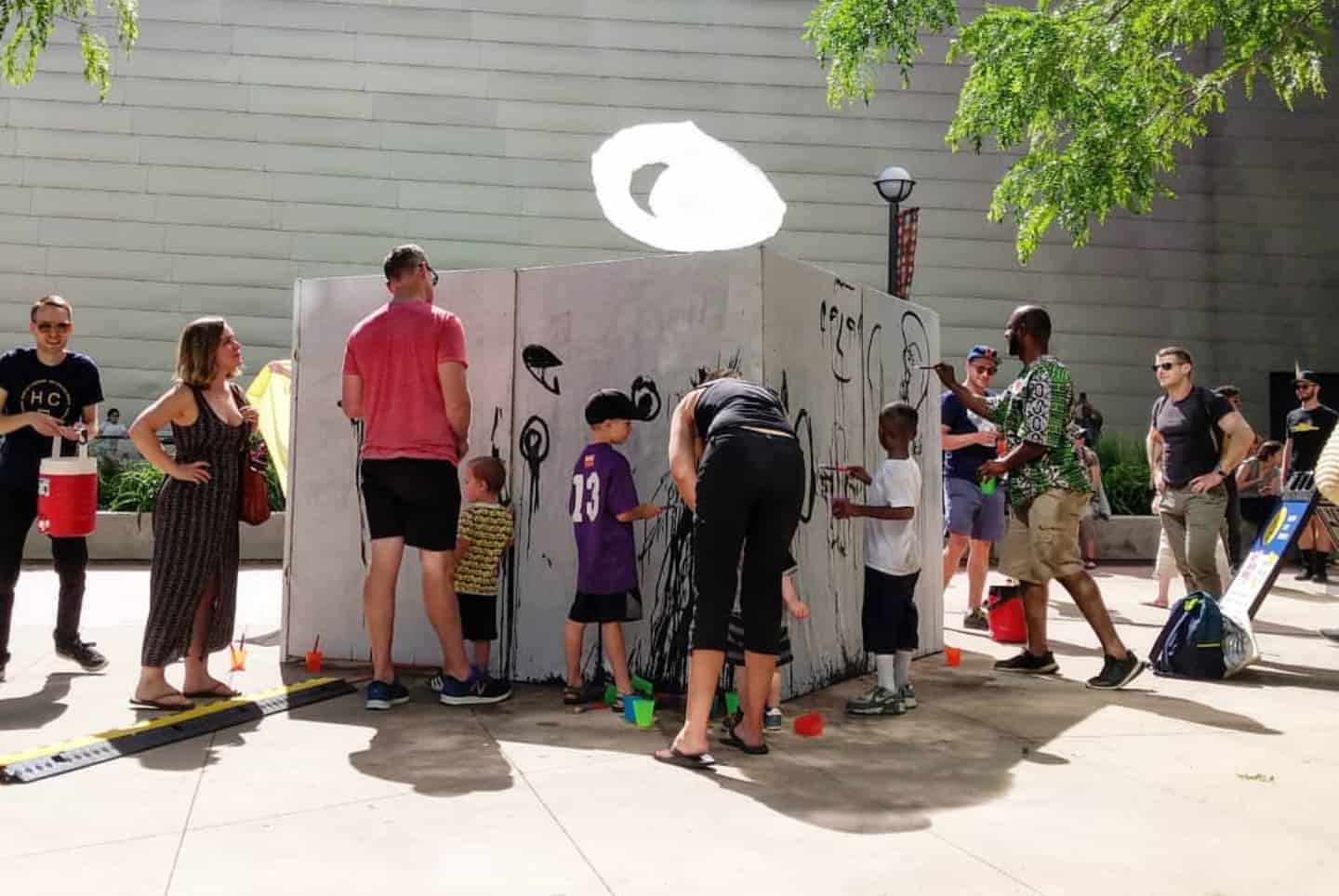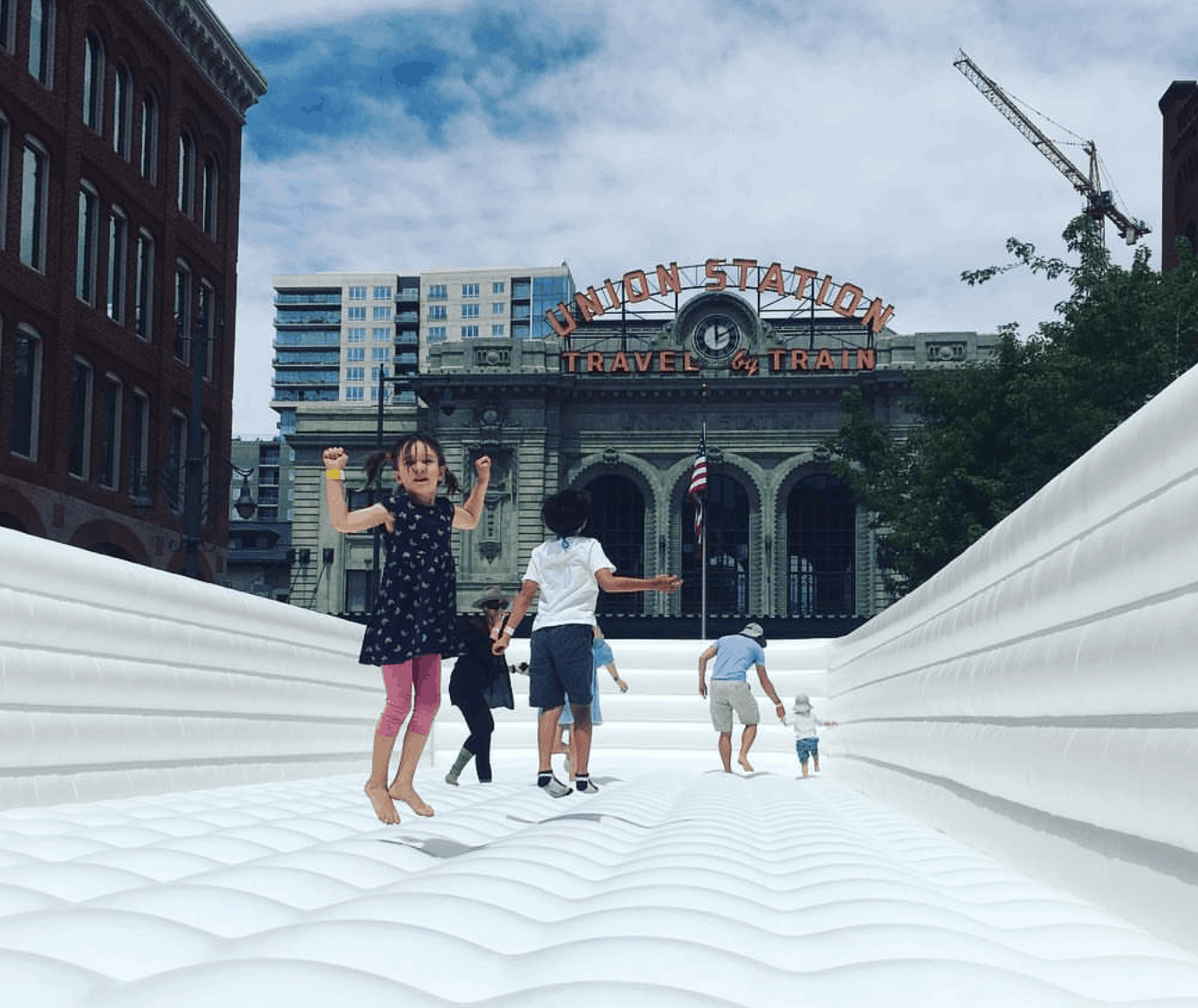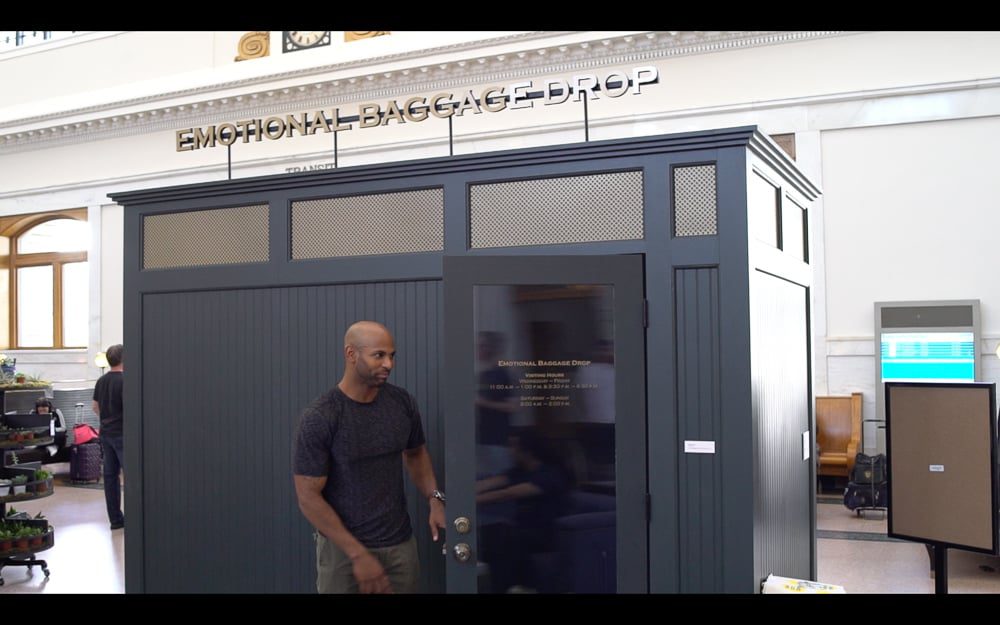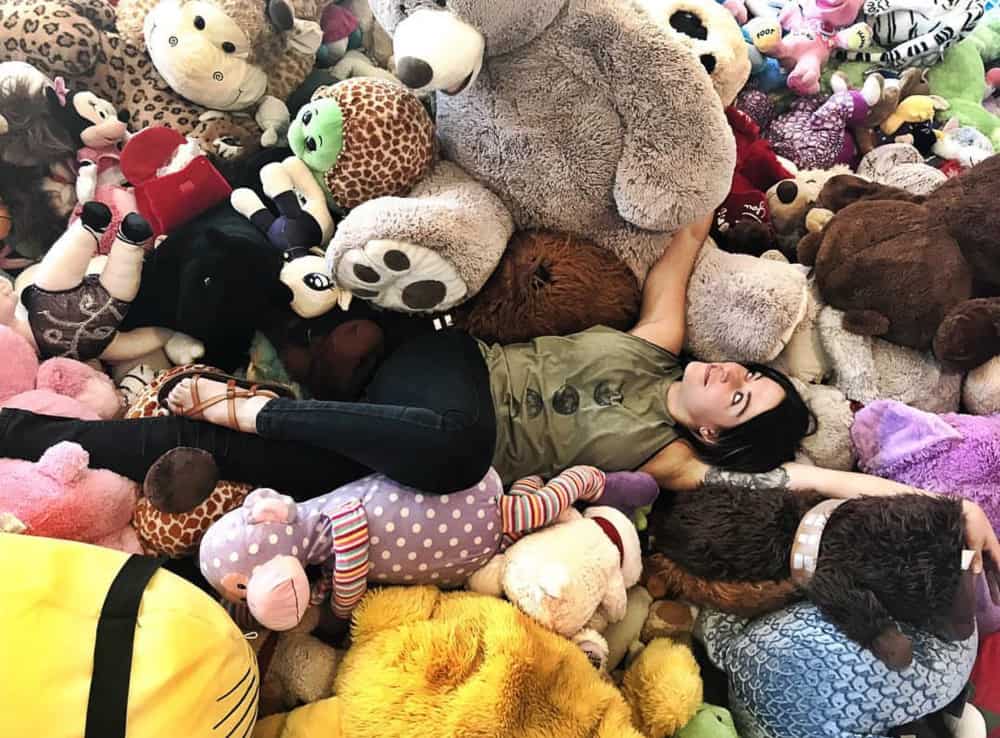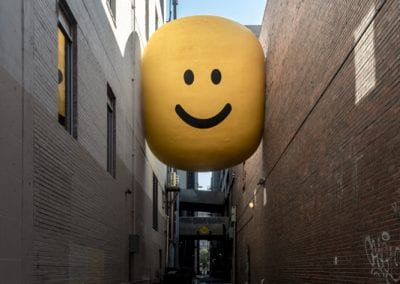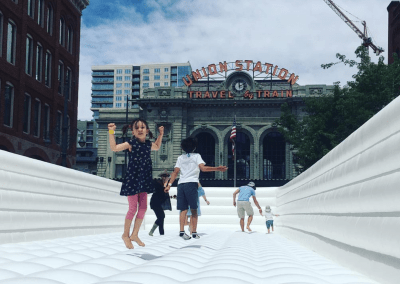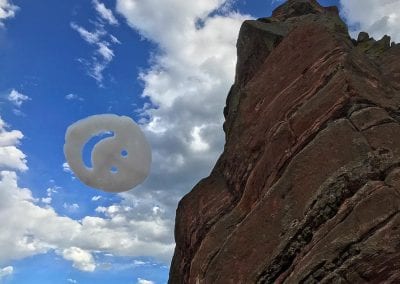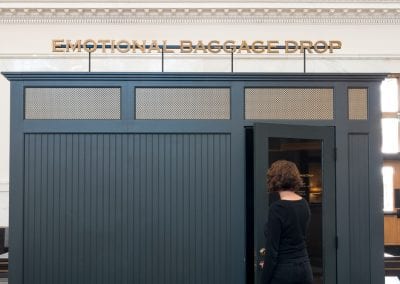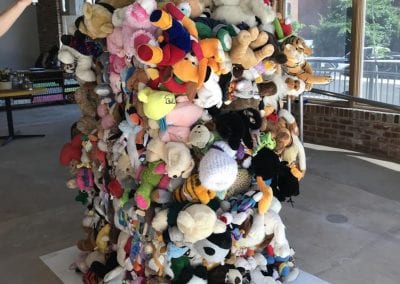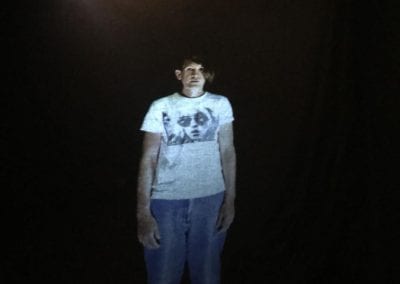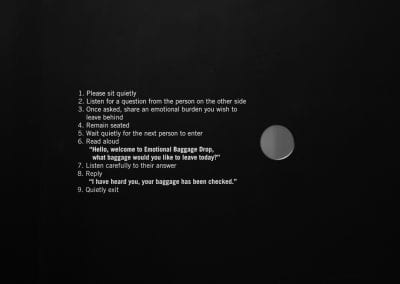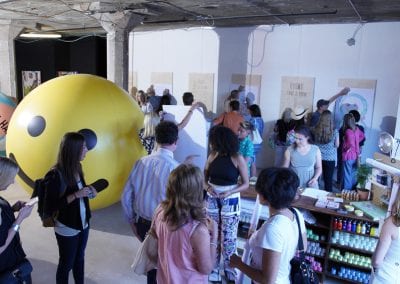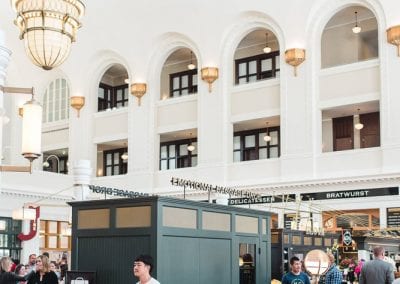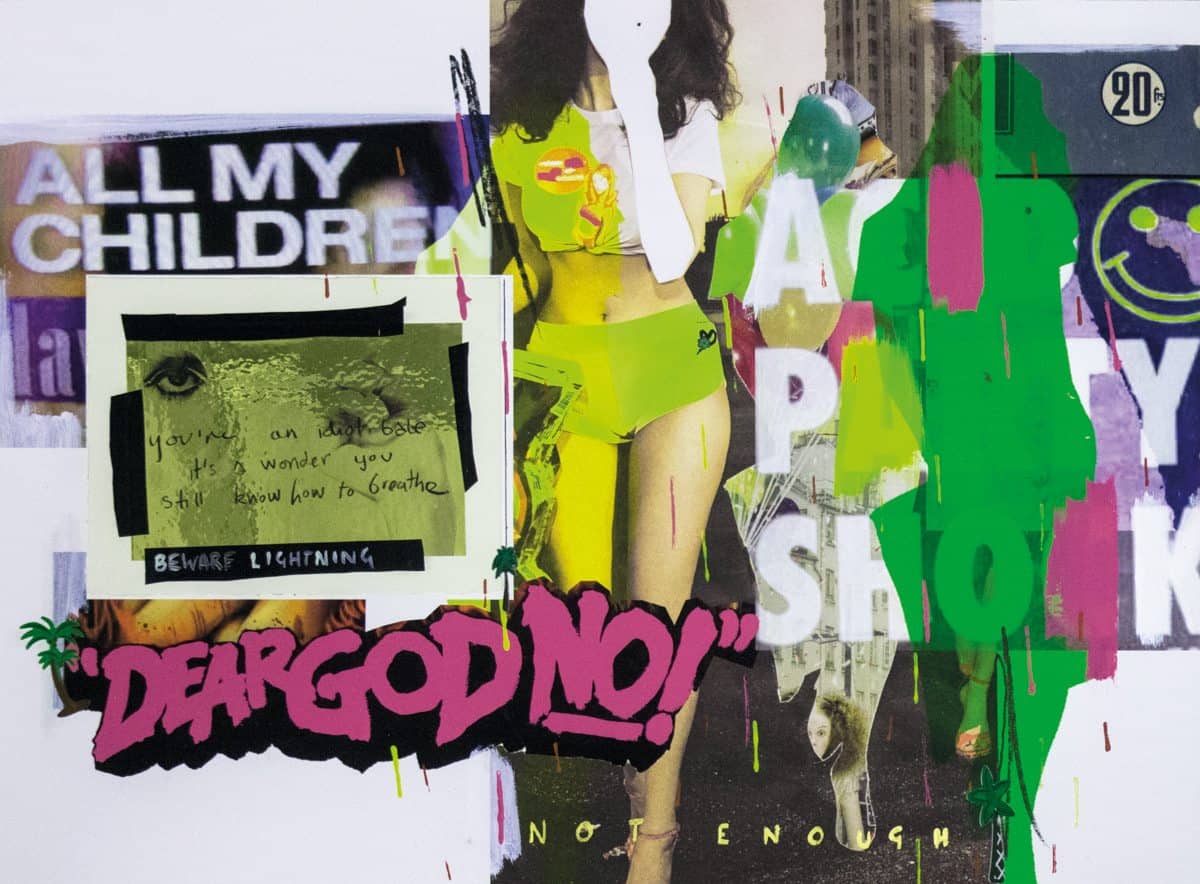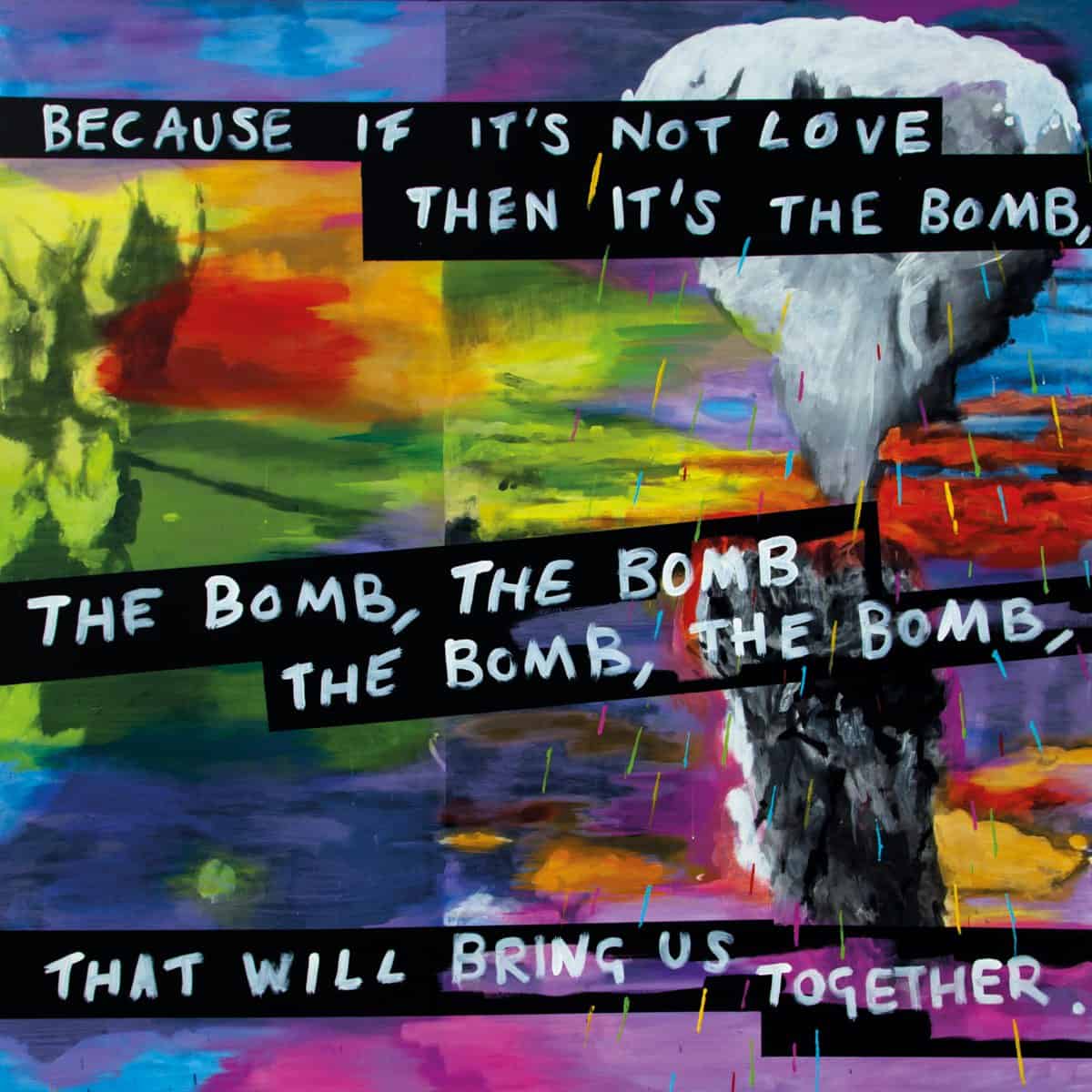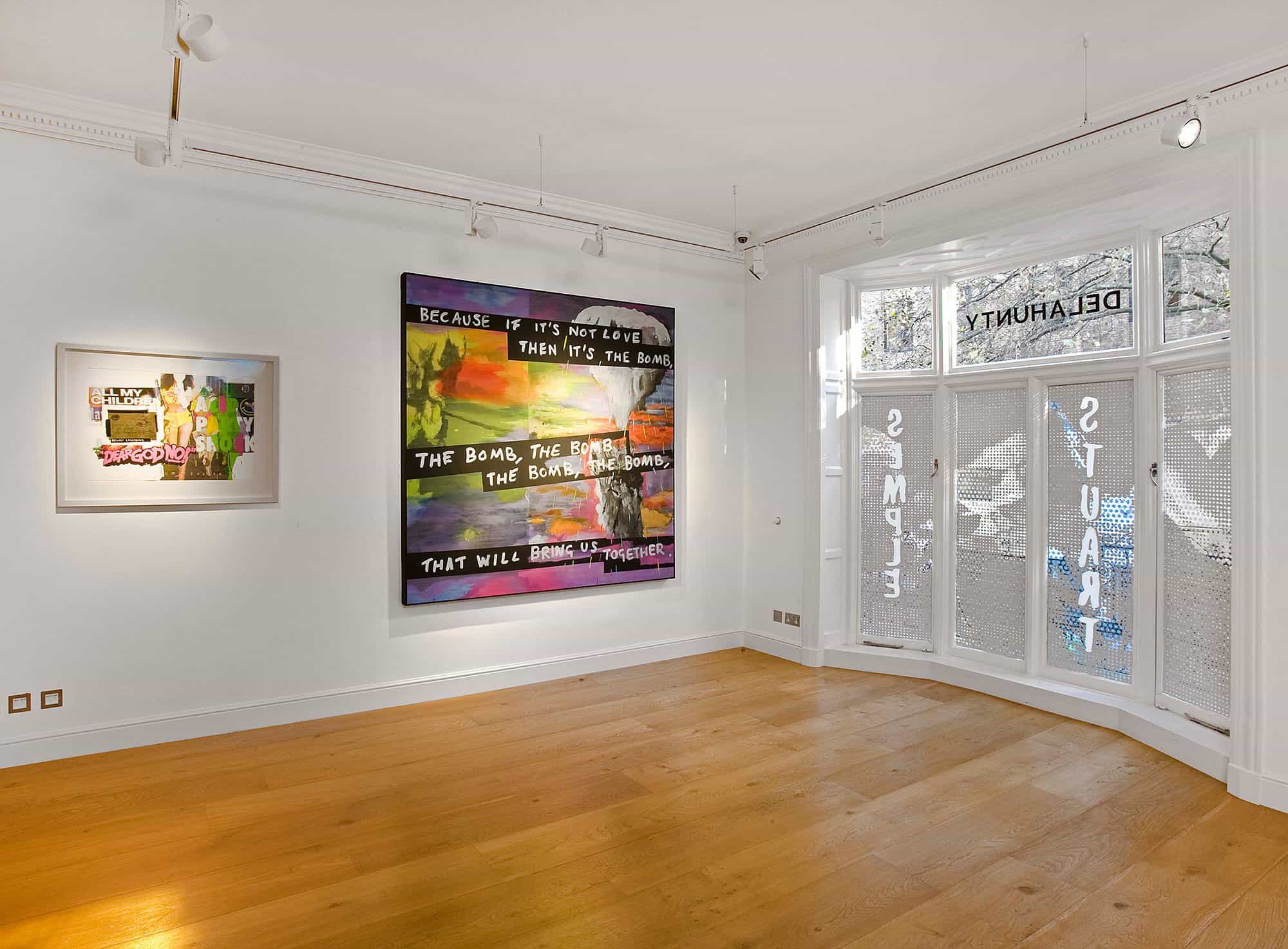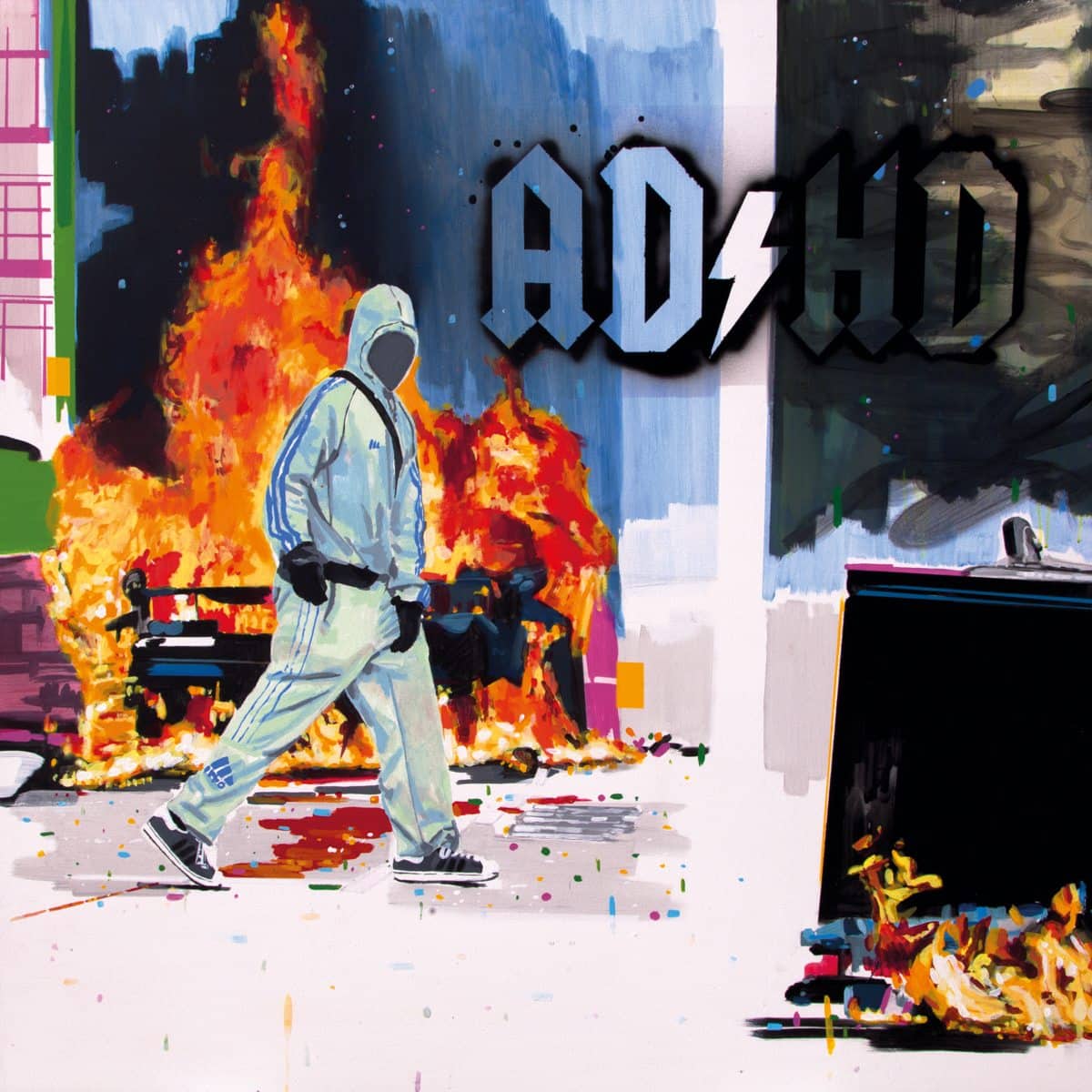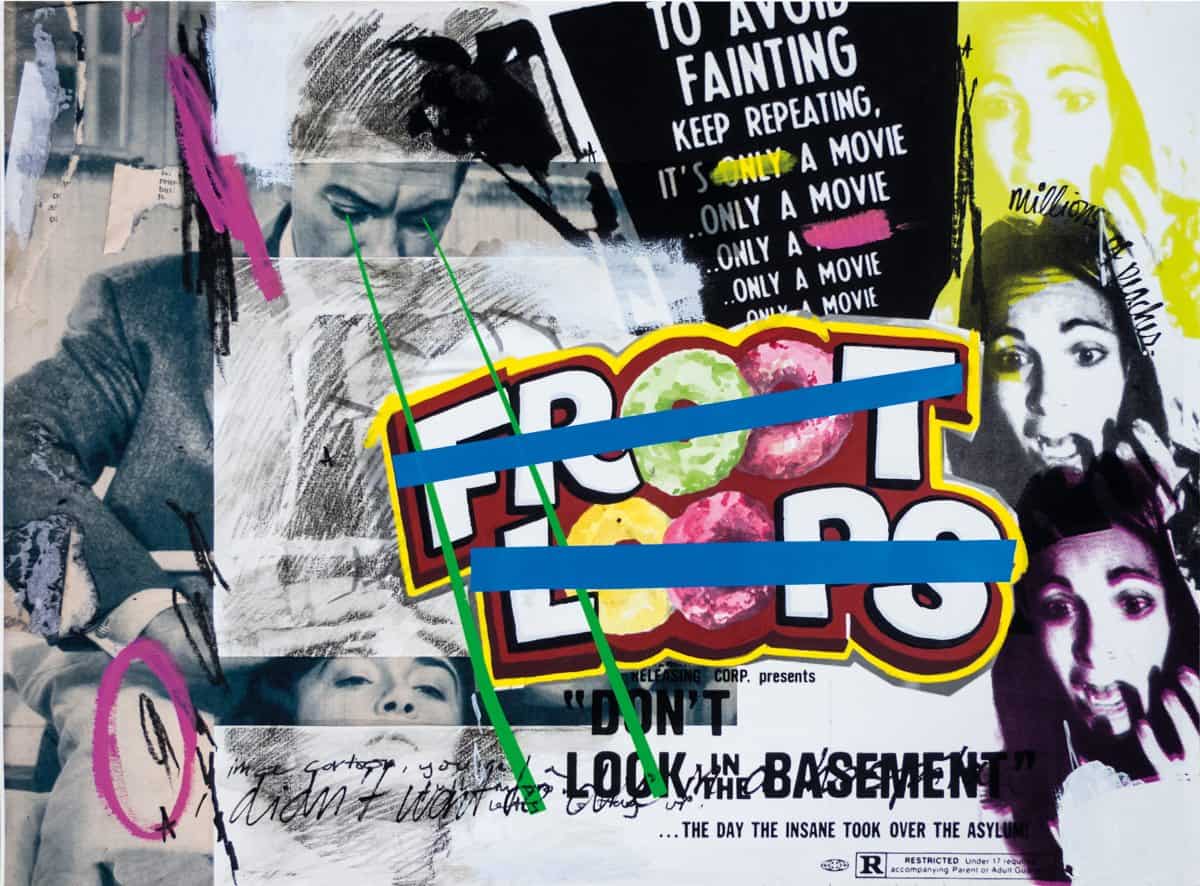Stuart Semple: Dancing On My Own: Selected Works 1999 – 2019, Bermondsey Project Space, London
I Should Be Crying But Just Can’t let it Show
Powder coated steel, spraypaint & lacquer 100 x 70 cm, Edition of 3, 2019
Blinded By The Hype
Recycled plastics, lazer etched mirror, L.E.D lights & motion sensor, 120 x 75 x 10 cm, edition of 6, 2018
A Pounding Outside Poundland (or how my nose got it’s wonk)
Acrylic & Charcoal on canvas, 240 x 170 x 7 cm, 2010
My Loneliness is Killing Me
Digital print, acrylic, marker, spraypaint, vinyl, graphite & india ink on coldpressed watercolour paper, 150 x 120 cm, 2015
Curated By Lee Cavaliere
9 August – 7 September 2019
– – – – – –
This exhibition navigates the winding and at times perilous road the artist’ work, and life, have taken over the last 20 years. One could say that the artist’s career began when his life ended, as he flatlined from a mysterious allergic reaction as a teenager. The months spent in hospital, the resultant fear, anxiety and feeling of being on a mortal knife edge; these each drove Semple to embark on a prolific image-making career beginning with proliferation on eBay, and spanning painting, sculpture, print, film, audio, the written word and social activism.
You can see elements of this journey through the exhibition; the terror and power of the medical environment; the boundless curiosity and humour that drives his practice; the dark places visited enroute and the generosity of an artist whose work challenges walls, encourages dialogue and continues to laugh in the face of death.
The works have a nostalgic naivety when referencing the 80’s pop cultural world of his youth, and this is often re-cast into new discordant narratives, commenting on the culture of the present day alongside his personal obsessions with the image world, isolation, technology and anxiety.
Overall, the trajectory of his work evolves in parallel to the growth of digital and online spaces, the radical shifts in British politics and a crisis in masculinity which sees the number one cause of death for young men in this country being suicide. Often strong discussions emerge around the impact of social media on mental health and the impact of digitization on the physical experience of the arts.
- Lee Cavaliere
MY SONIC YOUTH, FABIEN CASTANIER GALLERY, LA
For recent generations, it’s songs rather than poems we recite from memory. So as Semple calls out tragedies and travesties of destroyed innocence, his mind alights on cultural narratives of vibrant darkness, celebrities and conspiracies, which are perfectly encapsulated by music whose emotional confusion reflects confusing times.
In the show’s centerpiece, A Love Song’s Not Enough, made of acrylic and spray paint on canvas, and spanning six-by-ten feet, a boxer slumps with half-closed Byzantine eyes in a tumble of marble-pale skin, haunting a divided picture plane of greys and distressed rainbows above acres of gestural abstraction, like cake frosting marshland.
– Shana Nys Dambrot (Art ltd. review)
HAPPY CITY, DENVER
The project was all about bringing people together. Connecting strangers and swapping fear for connection in public space.
- I should be crying but I just can’t let it show – sculpture / alley way intervention.
- An Emotional Baggage Drop at Union Station
- An interactive jumping sculpture in the city centre
- A participatory exhibition – Happiness HQ
- HappyCloud releases throughout the city and surrounding areas.
ANXIETY GENERATION, DELAHUNTY, LONDON
John Carpenter’s Sci-Fi horror film They Live presents a dystopian future in which the population is bombarded by hidden authoritarian messages. These are visible only by using special sunglasses that also expose consumers as rotting zombies. Semple’s new paintings function in a similar way.
“Anxiety Generation” (all works 2014) reveals Semple as an assured and accomplished artist. His post-Pop sensibility (he is a child of both Warhol and Koons) embraces a complex layering of appropriated images and stenciled lettering sampled from print and digital sources, as well as social media.
To cut through our cyncism and give images again the power to disturb is quite a feat; that Semple manages it via the medium of paint is even more impressive.
His approach is summed up by the famous line from They Live: “I have come here to chew bubblegum and kick ass… and I’m all out of bubblegum”
– Jonathan R Jones, Modern Painters

